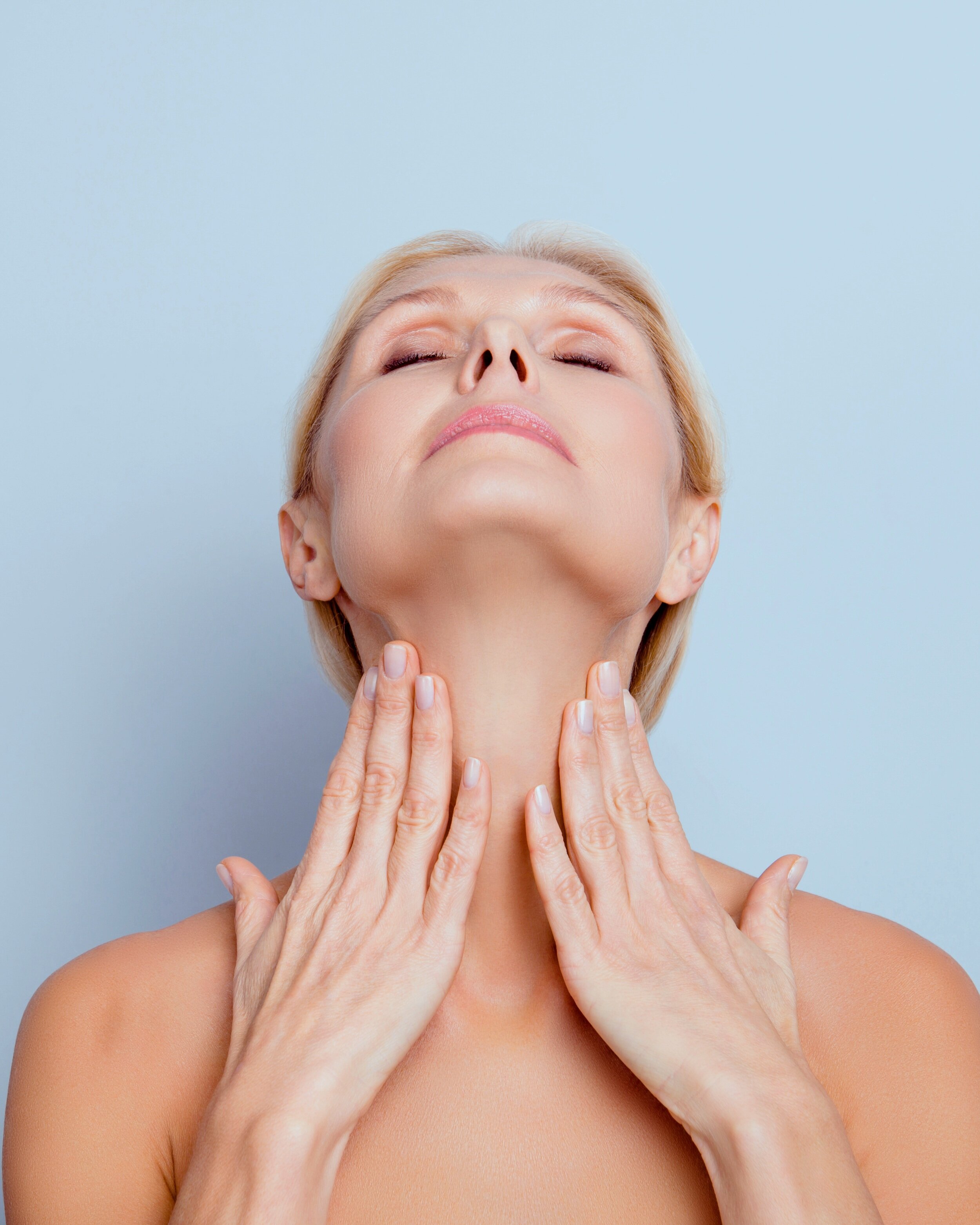Skincare over 40: Injectables or Not?
As our skin changes in our forties and beyond, it’s only natural that our skincare regime will change along with it. As you reach midlife, some may want to go down the injectables route for the first time, and equally, some may not. There is no right option, only what makes you feel the very best version of yourself. We’ve asked Dermatologist, Dr. Caitriona Ryan about either route and below she explains the effects they will have on your skin.
What injectable treatments would you recommend in the perimenopause or menopausal phase?
Anti-wrinkle injections can reduce wrinkles while strategically relaxing certain muscle groups to help elevate the brow, open the eyes, and reduce the pull of the neckbands on the jawline. Effective, well-placed botox injections should be subtle and leave a patient looking fresher and more relaxed. Dermal fillers can help to restore volume and reverse the structural changes in the face, restoring the aesthetically sought after ratios and dimensions of youth in the most natural way.
Hyaluronic acid dermal fillers have revolutionised non-surgical volume enhancement of the face and can be used to improve many age-related changes. We use them to augment the cheeks and restore youthful fullness, fill out gauntness in the lower cheek or temple area, plump thin wrinkled lips, smooth out the vertical lines which appear around the edges of the lips, and to fill out hollows under the eye area (tear troughs).
Also popular in perimenopausal patients is the bio stimulating pan-facial dermal filler Sculptra which enhances collagen production throughout the face while restoring volume to tighten and strengthen the skin and underlying tissues. Skin rejuvenation and tightening techniques such as IPL, fractionated lasers, micro-needling, PRP, Ultherapy and radiofrequency devices can improve texture, tone and drive collagen production.
Finally, though it won’t be suitable for everyone, hormone replacement therapy in suitable candidates can counteract the effects of oestrogen deficiency and slow down the ageing process, as it helps maintain the skin’s collagen density, thickness, elasticity and hydration.
If someone isn’t into injectables, what is the best care regime for keeping skin healthy and looking well?
For those averse to injectables, a scientifically-driven skincare regimen and minimally invasive skin rejuvenation techniques can optimise skin health.
Sunscreen
Sunscreen: Apart from the obvious reduction in skin cancer risk which becomes higher later in life, sunscreen prevents collagen breakdown, blotchy discolouration of the face, and the development of broken veins.
Retinoid
Where possible, a retinoid (retinol or prescription tretinoin) should be the cornerstone of every perimenopausal skincare regimen. Retinoids are the most effective topical therapies to reverse the signs of ageing, increase collagen production, reduce fine lines, discolouration, enlarged pores and have a minor but appreciable impact on reducing precancerous skin changes with increasing age.
Vitamin C
Vitamin C containing serums and creams can also help to produce a glowing complexion and retard the signs of skin ageing. Vitamin C is an important co-factor in the production of skin collagen, which can improve hydration and also has an antioxidant action to help rejuvenate the skin.
Serums
Serums which contain peptides have been shown to increase collagen and elastin production in the skin while reducing inflammation to produce improved skin tone and a reduction in fine lines and wrinkles.
Hyaluronic Acid
Hyaluronic Acid is naturally found in abundance in younger skin but declines during perimenopause and menopause. It is a powerful moisture-binding agent, enhancing skin hydration to produce plumper smoother skin, and reducing fine lines and wrinkles.
laser
Laser treatments are very popular to combat menopausal changes. Photo-rejuvenation with IPL is a simple and effective treatment to reduce irregular pigmentation, age spots, redness and broken veins. Fractionated lasers can considerably improve fine lines, wrinkles, large pores and irregular pigmentation caused by sun damage and ageing. A combination of these two treatments, “Photofractional Rejuvenation” has become very popular with our perimenopausal clients as it uses both these modalities simultaneously to optimise results at less cost with minimal downtime.
PRP
Another procedure that our perimenopausal patients love, particularly for loose skin around the eyes, is PRP. PRP is extracted from the patient’s own blood and injected into the skin to promote collagen production and kick-start the skin’s regenerative capabilities. Growth factors in the plasma increase collagen and elastin production, stem cell proliferation and vascular formation. This produces a plumping and tightening effect on the treated area.
The skin is rejuvenated and rehydrated and wrinkles are reduced resulting in a healthy, regenerated glowing complexion that looks smoother and more youthful. It is used to treat a wide range of skin concerns, including ageing and sagging skin in the upper and lower eye area, dark circles, fine lines and wrinkles, acne scars and stretch marks and to improve skin texture and wrinkling over the neck, chest and hands. It can also be used to promote hair regrowth in women with female pattern hair loss.
Ultherapy
Ultherapy is an FDA-approved, non-invasive, focused ultrasound treatment that stimulates the production of new collagen and elastin deep within the skin. Ultherapy uses precise ultrasound energy to target the deep structural layers of the skin without disrupting the skin’s surface to lift the skin of the upper and lower face, the neck, under the chin, the eyebrows and reduce wrinkles of the décolletage and chest.
Would you, or have you, gone down the injectables route?
We’d love to hear about your experiences below…
join the conversation
share and comment below, we’d love to hear your thoughts…










